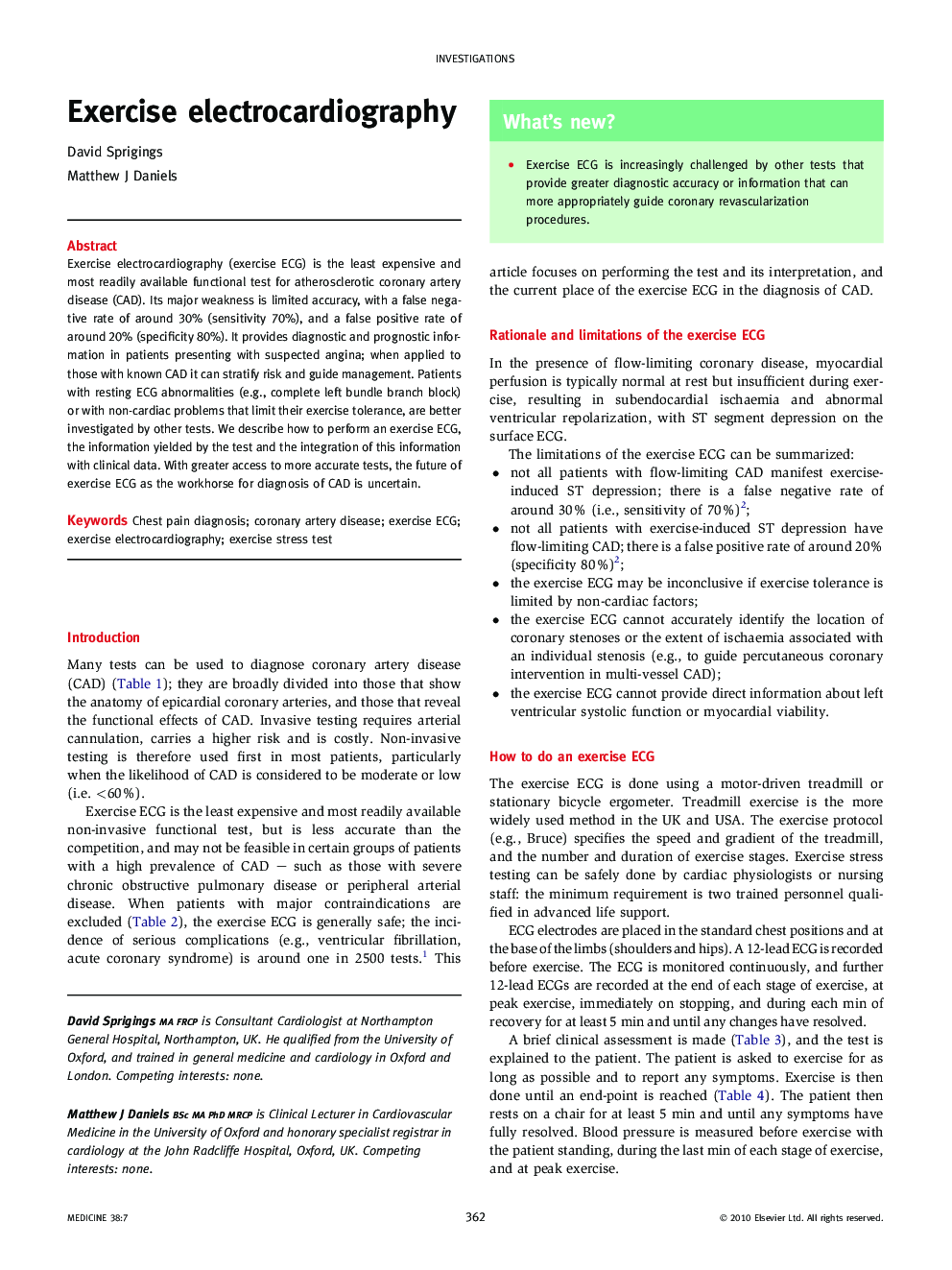| Article ID | Journal | Published Year | Pages | File Type |
|---|---|---|---|---|
| 3805163 | Medicine | 2010 | 5 Pages |
Exercise electrocardiography (exercise ECG) is the least expensive and most readily available functional test for atherosclerotic coronary artery disease (CAD). Its major weakness is limited accuracy, with a false negative rate of around 30% (sensitivity 70%), and a false positive rate of around 20% (specificity 80%). It provides diagnostic and prognostic information in patients presenting with suspected angina; when applied to those with known CAD it can stratify risk and guide management. Patients with resting ECG abnormalities (e.g., complete left bundle branch block) or with non-cardiac problems that limit their exercise tolerance, are better investigated by other tests. We describe how to perform an exercise ECG, the information yielded by the test and the integration of this information with clinical data. With greater access to more accurate tests, the future of exercise ECG as the workhorse for diagnosis of CAD is uncertain.
